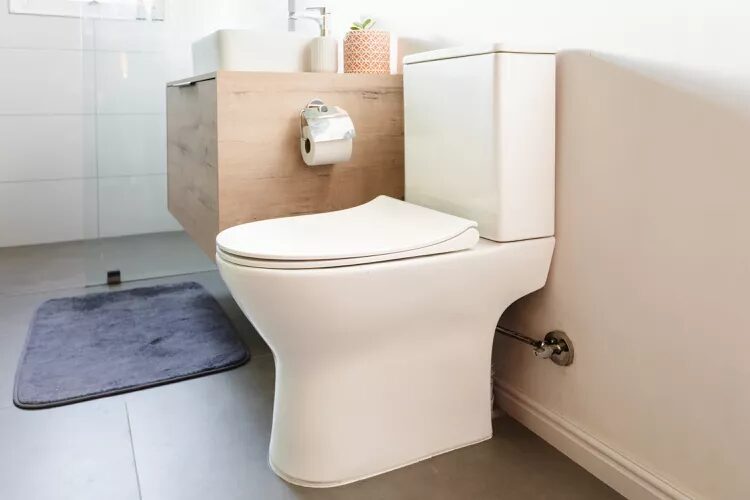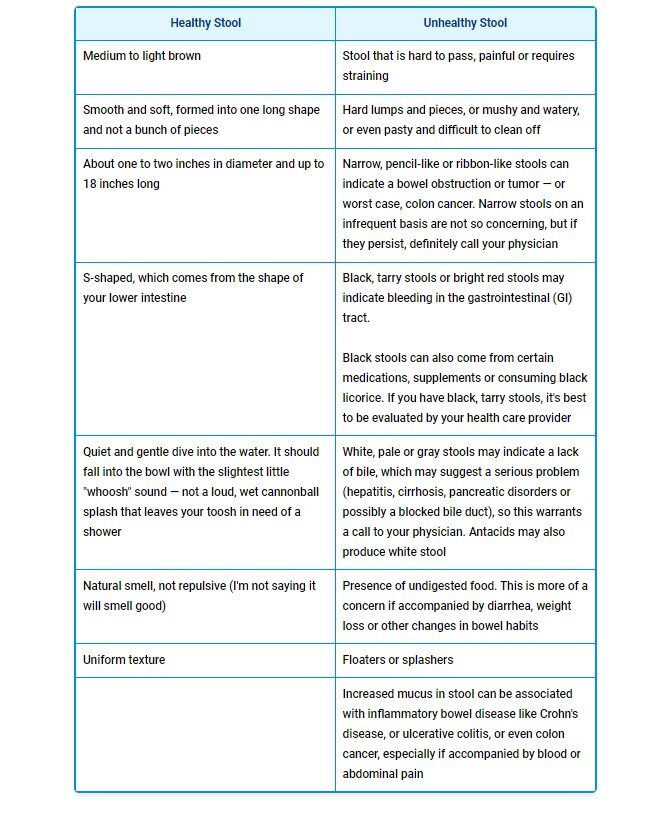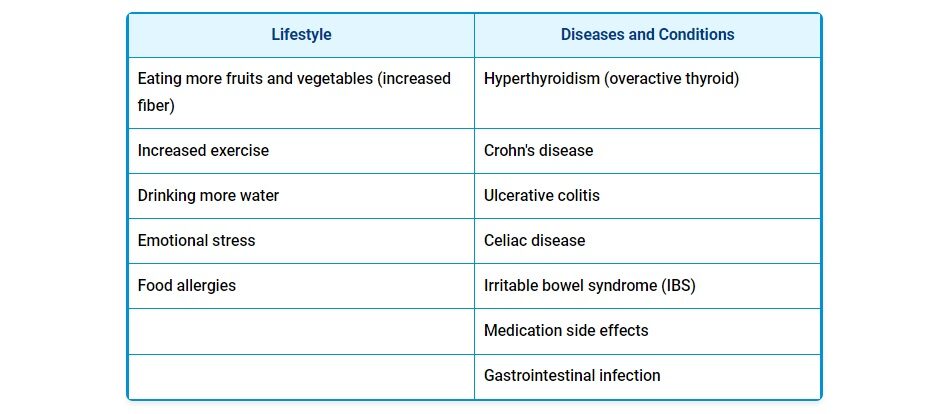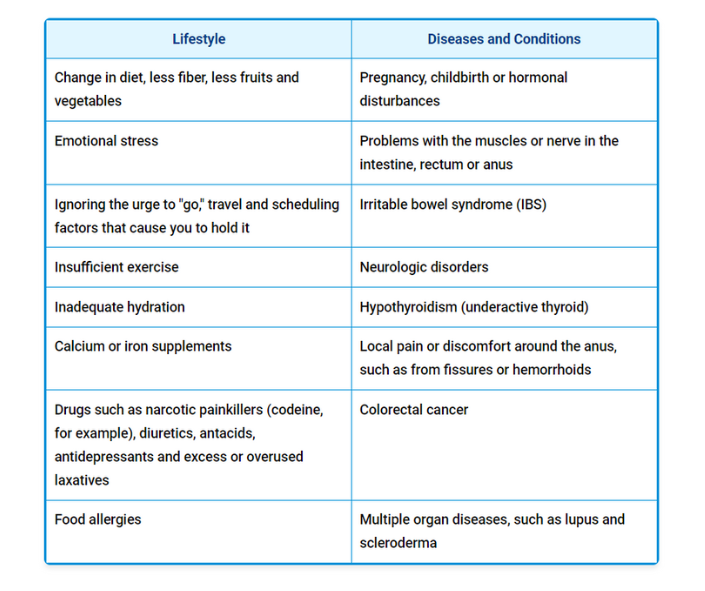But your bodily emissions are an important health topic that deserves serious attention, regardless of the ick factor. In fact, if you ignore what you deposit in your toilet, you could be flushing your health down the drain. Did you know the average person generates about 12 tons of stool in his or her lifetime?1 It turns out, there is much to be learned from this mountain of poop.
The shape, size, color and other fecal features can tell you a great deal about your overall health and how your gastrointestinal tract is functioning. It can even give you clues about serious disease processes that could be occurring, like infections, digestive problems and even cancer. Poop comes in just about all the colors of the rainbow — and please forgive me for using the words poop and rainbow in the same sentence.
Although there is a certainly a wide variety of stool colors, textures and forms that are considered "normal," there are definitely things that, if seen or experienced, warrant immediate medical attention. With this in mind, the overview that follows covers what you need to know about what's normal and not normal in the bathroom department.
What Is Normal Stool?
Your stool is about 75% water. The rest is a fetid combination of fiber, live and dead bacteria, miscellaneous cells and mucus.2 The characteristics of your stool will tell you a good deal about how happy and healthy your digestive tract is. The color, odor, shape, size and even the sound it makes when it hits the water — plus whether it's a sinker or a floater — are all relevant information.
If you're one to poop and scoot quickly out of the bathroom without looking in the toilet, then you might want to slow down and look down. The Bristol Stool Chart is a handy tool that may help you learn what you're going for. Ideally, your stool should approximate Types 3, 4 and 5, "like a sausage or a snake, smooth and soft" to "soft blobs that pass easily." Type 4 is the Holy Grail.
Fiber tends to bulk up your stool and acts like glue to keep the stool stuck together, instead of in pieces. If your stool is on the softer side, short of diarrhea ("soft serve," as some call it), it could be related to lactose intolerance, artificial sweeteners (sorbitol and Splenda), or a reaction to fructose or gluten.
Look, Listen and Smell Before You Flush
What's normal and what's not when you look into the toilet? The following table will help you narrow down what to look for so you aren't needlessly alarmed. Of course, there are a few signs that are cause for concern, and those are listed too. If you have a change in stools accompanied by abdominal pain, please report this to your physician.3
Does Your Stool Have a Really Bad Odor?
If your stool has an extraordinarily bad odor, it should not be ignored. I am referring to an odor above and beyond the normally objectionable stool odor. Stinky stool can be associated with a number of health problems, such as:4
- A malabsorptive disorder
- Celiac disease
- Crohn's disease
- Chronic pancreatitis
- Cystic fibrosis
Speaking of malodorous things, what about gas? Passing gas (flatulence) is normal. Not only is it normal, it's a good sign that trillions of hard-working gut bacteria are doing their job. People pass gas an average of up to 14 times per day.5 Ninety-nine percent of gas is odorless,6 so you may even be unaware you're passing it. Think about it — were it not for an exit, we'd all blow up like balloons.
How Often Should You Move Your Bowels?
Normal bowel habits vary. When we talk about regularity, what we're really talking about is what's regular for you. Three bowel movements per day to three per week is considered the normal range.
What's more important than frequency is the ease with which you move your bowels. If you need to push or strain, something is off. Moving your bowels should take no more effort than urinating or passing gas. The thing to watch for is a sudden change in your bowel habits.
Many factors can affect regularity, such as diet, travel, medications, hormonal fluctuations, sleep patterns, exercise, illness, surgery, childbirth, stress and more.7
Constipation and Diarrhea
The average body takes between 18 and 72 hours to convert food into poop and pass it on out. When this time is significantly shortened, the result is diarrhea because your intestine doesn't have time to absorb all the water. Conversely, when transit time is lengthened, you may end up constipated because too much water has been absorbed, resulting in hard, dry stools.
Constipation is defined as passing hard, dry stools that you have to strain to move, and it's typically accompanied by decreased frequency of defecation. Straining is not normal, nor is experiencing feelings of incomplete elimination, bloating, crampiness or sluggishness after going number two. If you're over the age of 65, your risk of becoming constipated increases significantly.
Chronic, untreated constipation can lead to fecal impaction, which can be a serious medical condition. Laxatives should be avoided and used only as a last resort. If you absolutely must use a laxative, make sure it is used for only a very short period of time.
Common Causes of INCREASED Bowel Frequency/Diarrhea8
Common Causes of DECREASED Bowel Frequency/Constipation9How to Score a Home Run With Your Bowel Movements
Most gastrointestinal problems can be prevented or resolved by making simple changes to your diet and lifestyle. If you aren't achieving poo perfection, or if you don't feel right, then look at the following factors and consider making a few changes. These strategies will help reverse constipation or diarrhea, in addition to helping prevent recurrences.
Comment: A note of caution: spinach and sweet potato both contain high amounts of oxalates which can be detrimental long-term! See also: Objective:Health: #9 - The Hidden Dangers of Oxalates in Your Food - Interview With Sally K. Norton, and:
Consider a Bidet
As a practical and affordable alternative to toilet paper, you might want to try a bidet. Bidets are the norm in Europe — it's the rare bathroom that is found without one. Once you experience a bidet, you'll probably never go back to toilet paper. A bidet is refreshing in a way toilet paper will never be, is gentler and less irritating than wiping with paper, and reduces hand contamination.
Whenever I travel it is one of the items that I miss most from my home, and nearly everyone that I know who has one just loves it. A bidet pays for itself in no time with the money saved on toilet paper, as well as helping save valuable environmental resources.
You still need a sheet or two of toilet paper to dry yourself, but that is a tiny fraction of what you would need to clean yourself. More importantly, a bidet cleans your bottom far more effectively than dry toilet paper. They are easy to install, as no plumber is required.
Sources and References
- 1 Daily Mail March 22, 2018
- 2 EverydayHealth
- 3 Ezine Articles
- 4 MedlinePlus
- 5 National Institute of Diabetes and Digestive and Kidney Diseases, Symptoms & Causes of Gas in the Digestive Tract
- 6 Vox December 4, 2014
- 7 The New York Times August 2, 2005
- 8 Mayo Clinic, Frequent Bowel Movements, Symptoms
- 9 Cleveland Clinic, Constipation









Nature did humanity a great favour by putting one arse away from one's head.
As for Bidet toilet paper then a shower if needed.